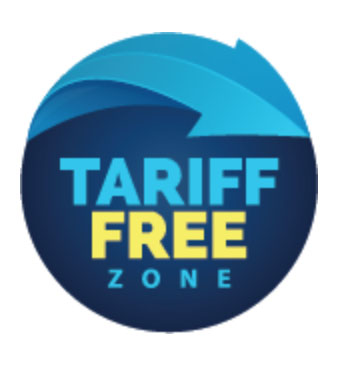Manufacturers of electronic hardware have begun to feel the impact of tariffs enacted in July on 800 categories of goods produced in China and imported to the U.S. Electronic designers are hit hard as the price of 1800 electronic components from ceramic dielectric fixed capacitors to electrical wirewound variable resistors to PCB materials just took a 10 to 25 percent leap. The U.S. government’s response in the form of these tariffs to the “acts, policies, and practices of the Government of China related to techn0logy transfer, intellectual property, and innovation” means someone has to hold the bill — or pass it along — for the increase in their bill of materials.

While direct increased costs to consumers are inevitable, there are also significant transactional costs for manufacturers and their authorized distributors. Some distributors with healthy inventories have been able to hold back the “trickle-down” increase, but they will inevitably have to pass through the increases to their customers.
Unless they take a somewhat riskier approach.
Privately-owned, Santa Monica-based distributor Master Electronics is franchised for over 250 suppliers. In an announcement last week and a letter to their suppliers, Master announced that the company is now “…a tariff free zone” and “…will absorb the full tariff in order to preserve your current purchasing experience and supply chain with no disruption or additional costs.”
In an exclusive interview with Master Electronics’ President Riad Nizam, EEWorld asked the executive to elaborate on what went behind this decision and how he sees it playing out for Master Electronics, their suppliers, and their customers.
Obviously, this is a pretty risky strategy, but as Master Electronics is a privately-owned company and you aren’t beholden to shareholders, what sort of thinking happened amongst you and other executives when you made this potentially revenue-altering decision?
Our thought was if a distributor can’t solve an issue like this, why do they even need us at all? And our thinking was, yes, this can be an impact to the bottom line, and could hurt some profits short-term. But could we have such great customer satisfaction, gain new customers, and new opportunities with customers that, in the long term, it will work itself out? So it’s a sort of short-term, long-term view, isn’t it? Since we are privately held, we can we take a little hit short-term for a long-term possibility of success. And what if this tariff goes away in six months or nine months? Everything we try to do here is long term. We don’t run the company quarter to quarter.
What has been the response by your suppliers to the Tariff-Free Zone announcement? And what do you see other distributors doing about this issue?
Our suppliers are ecstatic. A lot of them have said — which is a compliment — “That’s very Master of you.” So they were happy, and they were happy that they had an avenue for their customers to work with and to have a company like us to avoid the tariff. A lot of the other distributors have already made their announcement and position that they’re passing along the increase. So I don’t see anyone following suit, and from what I can tell, almost everyone’s already started charging.
What percentage of your business is affected by these tariffs?
It’s a moving target, because the newest list just came live about ten days ago, and every supplier’s handling it a bit differently, and every supplier has not acted on it. I would estimate about 15 to 20 percent.
This is a lot of goodwill, and that’s not always easy to find. Do you feel like that goodwill will translate to increased sales that will make up some of the lost revenue — because your suppliers want to be more engaged with you?
I absolutely think that’s part of it. And that’s kind of the X-factor. There are suppliers that are, perhaps, not as close to us as others but because of this kind of commitment, may end up being so. We’ve already had calls from suppliers wanting to get to know us better based on this announcement. So it’s hard to put a value on it It goes back to, we’re in the service business, and we’re about customer satisfaction. Can you even put a price on customer satisfaction or goodwill?
 We hope to add value to our suppliers and customers’ business, and we think the Tariff Free Zone is one way we can do it — and lead us to a long-term partnership between our company and our customers.
We hope to add value to our suppliers and customers’ business, and we think the Tariff Free Zone is one way we can do it — and lead us to a long-term partnership between our company and our customers.
You mentioned that many of the other disties are already passing the costs along. But have the effects of the tariffs worked their way through the rest of the supply chain to the point where the OEM is really feeling it, and then to the end users of those products?
I don’t think it really started happening until 30 days ago, but I think every day it’s exponentially getting worse. Because more distributors organize, more suppliers are getting organized. The reaction time of the suppliers affected by List 3 compared to the suppliers affected by List 1 and List 2 has been way faster because they were ready for it. And that’s kind of the threshold right there if you look at lead time and the way customers plan. If you’re a customer and you haven’t felt it yet, you are going to feel it. It’s not a matter of if, it’s a matter of when.
You were quoted as saying Master Electronics is a steadfast supporter of American business and a proponent of American design and ingenuity. Do you feel that the ultimate impact on these and other tariffs run contrary to that belief?
No, I think it’s more that our customers are a casualty of war. So American companies are being affected, and maybe it is going to be a small casualty of war to achieve what the U.S.government’s trying to do.
There’s been quite a bit of conversation about more U.S.-based electronics manufacturing purchases shifting to Mexico because of the low tariffs between China and Mexico. Do you think that’s the case?
I think that’s already been happening prior to the tariffs. The costs have gone up in China significantly every single year, and the migration to manufacturing in Mexico was already increasing prior to this. I think it has a chance to go up a little bit higher because of the tariffs and it helps push it along. But what I see happening with suppliers now is that they are manufacturing more in China for the Asian market and for the North America market, they are manufacturing in Mexico. So they might have duel manufacturing based on where the consumption of the end product is. With the labor cost and the transportation cost that have been going up for years, Mexico seems to be very competitive with China these days.
Watch Riad Nizam’s announcement of the Tariff Free Zone here.


Leave a Reply
You must be logged in to post a comment.